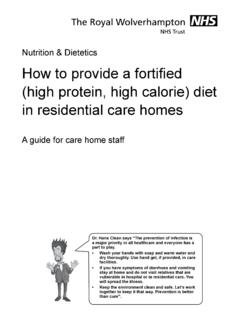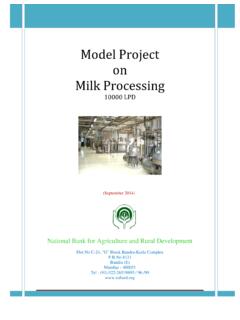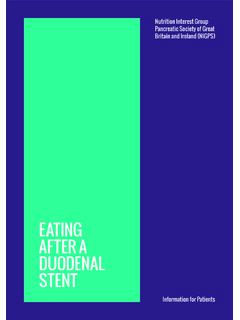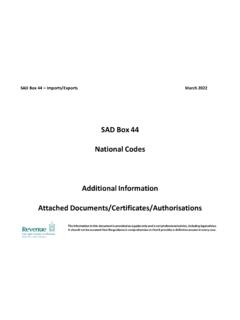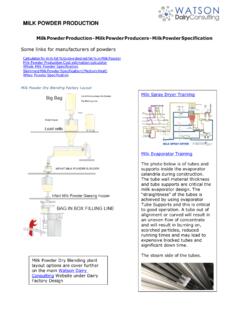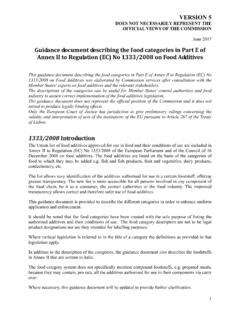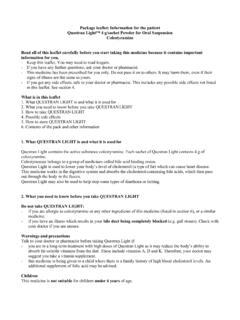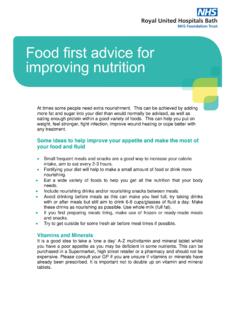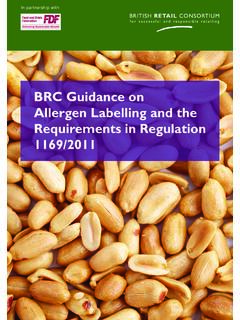Transcription of Best Bread Production Handbook - European Commission
1 1 Best Bread Production Handbook 2018 2 Contents 1. A new old story - short introduction in bakery 4 Traditional baking things to keep in mind 5 Baking in our days new challenges 6 How to maintain a good balance between old and new 7 2.
2 All stuff we need raw materials and others 8 Flours different cereals and sustainability 9 Yeast and leaving procedures how to obtain the best flavors 10 3. What about E-numbers? main additives used in bakery 13 Flours correction direct from the mill 14 additives role and necessity 15 to replace E-numbers 19 4.
3 Dough processing route first steps of the technological flow 21 , fermentation, dividing, final proof - main processes involved 23 Specific parameters definitions and importance 26 5. From dough to Bread baking steps 27 during baking 28 types how to assure the products individuality 30 6. Bread cooling 31 Importance and parameters 32 ageing of Bread modifications and prevention 33 3 7.
4 Packaging and shelf life 36 the product integrity packaging materials and techniques 37 or long shelf life? how to manage 39 8. Technological scheme how to draw it and how to follow it 41 Estonian Bread typical product technological scheme 42 Romanian Bread - typical product technological scheme 43 Bread - typical product technological scheme 44 9.
5 Let s analyze our work evaluation of bakery products 45 attention from the beginning raw materials control 46 the technological flow phases control 47 as a consumer does final products control 48 10. Innovation and new trends 49 and development role 51 s needs and expectations 53 References 55 4 Chapter 1 A new old story - short introduction in bakery The history of the bakery is parallel to the history of human civilization.
6 The Bread could have been one of the first foods processed by man and was certainly is the first to be produced on a large scale. Even there are no records of when the Bread was originated, but the Bread has been around for thousands of years. Rustic breads consisted of crushed grain, soaked in water, kneaded and letting it fermenting with natural yeasts to be baked. Loaves of Bread were buried as funerary offerings, and have been found, dated at 5,000 years old in predynastic Egyptian tombs. Archaeological evidence shows that a quite evolved baking Production existed in Egyptian civilization, about 5,000 years ago, possibly being the staple food of the laborers working in pyramids construction (the process of making Bread in the bakery of Pharaoh is described on the walls of the tomb of Ramses III ).
7 Figure 1. Bread making process in Egypt, 3,000 (source: ) In ancient Rome, grain milling and baking the dough into loaves was a well-established practice. Before appearing compressed yeast, the seeding system of dough was made with natural yeast. Natural yeast was the fermentation base until the seventeenth century when begins the addition of brewer s yeast. 5 But it was not until the mid-nineteenth century when Bread began to be manufactured exclusively with brewer s yeast.
8 The Bread obtained had a bitter taste and the baker had big problems to keep that yeast. The problem was solved later with first compressed yeasts, which possessed better preservative qualities and greater fermentative power. Traditional baking things to keep in mind Before the use of brewer s yeast for fermentation stage, a dough formed as a mix of water, wheat or rye and raisins, prunes and bran, had been left soaking as a first fermentation. Then, an initial alcoholic fermentation started and after a few days of cultivation an acidic fermentation triggered.
9 After several refreshes, this sourdough was added to the dough. From the latest batch a piece of dough was put away, and after two or three refreshments, spaced each 4 or 5 hours the natural yeast was obtained. "Dough" ready to use, in a proportion of 30 to 40 kilos dough per 100 kg. flour. The baker had to pay special attention in the development of this ferment/sourdough, because it depended on getting good quality Bread . At present time, therefore, the fermented dough has lost its basic function of serving as "yeast seeding ", as this objective is achieved conveniently with the addition of yeast, focusing on other objectives.
10 In a few words we could resume that as biotechnology has progressed it is possible to bake without the use of sourdoughs, but this is a relatively recent development. The important issue is that it has been found that when you stop using sourdough, Bread is not the same. Therefore it is clear that the sourdough has a positive influence on the quality of Bread , and because it improves the final product, different technologies were developed to find various types of sourdough suitable for the industrial and large scale Production .











